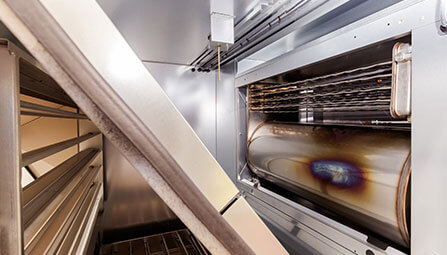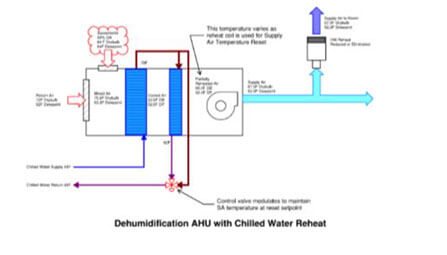Plate exchanger aluminium 3-way mix
Call us on 01634 729 690

PXA3MX Plate
exchanger aluminium
3-way mix
Plate heat exchanger air handlers are installed either in a side-by-side or stacked configuration. The warm extract air and the cool fresh air, separated by thin plates, pass each other in crossflow. Heat is transmitted from extract air to fresh air purely by conduction because of the temperature difference between the two air streams. The warm extract air is cooled down and the cool fresh air is heated. The specific heat output capacity from this energy recovery process depends on the temperature difference between the two air streams.
The air handling unit’s air-mixing plenum combines the two different air streams. The mix of fresh air and recirculated air can be adjusted to suit the needs of the building’s occupants. Typically, this is controlled by dampers that measure the airflow as a percentage. When one is lowered, the other is raised, and vice versa to create consistently ideal air conditions. This system is ideal for buildings in which the occupancy rate can vary greatly throughout the day, or seasonally, such as schools and universities.
Review our Plate Exchanger Aluminium 3-way Mix brochure here:
Get in touch for your AHU
Our team are always available to discuss your site’s needs with you. Give us a call on 01634 729 690 to speak with our expert engineers. You can also send us an email at sales@eceuk.com or make a more detailed enquiry through our online form.
Heat recovery
efficiency
The correct efficiency for your site will depend on the economics of your site and regulations such as Eco Design Commission Regulation (EU) No 1253/2014 which states that heat recovery efficiency should be no less than 73%. Energy prices, running times, useful life, temperatures, maintenance costs, and interest rates can all affect what the optimal efficiency might be for your site but with our units, heat recovery efficiency could reach 80%.
When outside air conditions are right – usually during the mid-season – ambient temperatures are suitable for free cooling. The mixing damper will set to close, and the system will use fresh air for optimum energy efficiency. When fresh air is not required, the mixing damper can be set to automatically begin full recirculation for further efficiency.

Ancillary items
Additional devices are available with your unit to ensure it is functioning at maximum efficiency.

Filtration
Proper filtration can eliminate dust and other contaminants in the air that is pumped into your building. This will protect the health and comfort of workers and visitors.

Direct heating
Heat exchangers, including gas fired fuel burning heaters and electric air heater batteries (EAHBs) are placed directly in the air stream to regulate the temperature.

Indirect heating and cooling
Indirect heating and cooling coils are fed by a central plant and use hot water, steam heated, DX, and chilled water to alter the conditions of the air.

Humidification
In colder climates continuous heating can dry out the air. We use evaporative, vaporiser, spray mist, and wetted medium to counter this.

Dehumidification
Dehumidifiers use a series of heating and cooling coils to draw moisture out of the air at your site which can help prevent issues like damp and mould.
Intelligent energy controls
At ECE UK we can supply intelligent energy controls as standard. They are an essential device that enables you to monitor your air supply, the return air quality, energy available to recover, and the CO2 concentration for optimum energy efficiency while maintaining desired fresh air requirements. You’ll be able to take full advantage of your air handling unit’s features with a sophisticated and user-friendly controller.
Net zero carbon
Offsetting harmful carbon emissions is a major part of curbing the effects of climate change. With efficient air handling you can provide your building with the air it needs at the correct temperature and proper ventilation. The energy recovery capabilities of our units make them highly efficient and they can be easily controlled to deliver the optimum result with minimal environmental impact.

Factory Acceptance Test (FAT)
We can conduct a Factory Acceptance Test prior to the delivery and installation of your AHU. This a series of checks that ensures the AHU is of the specified design, is safe to operate, contains all the right component, and will function exactly as intended.
- Completed FAT protocol
- Installation, Operation, and Maintenance (IOM) manual
- Recommended spare parts lists
- Certificates of compliance
- As-built certified drawings
- Air tightness certificate
- Filter DOP certificate
Contact the experts
Get in touch with the experts and find out how we can meet the needs of your site. You can call us on 01634 729 690 or send an email to sales@eceuk.com.
